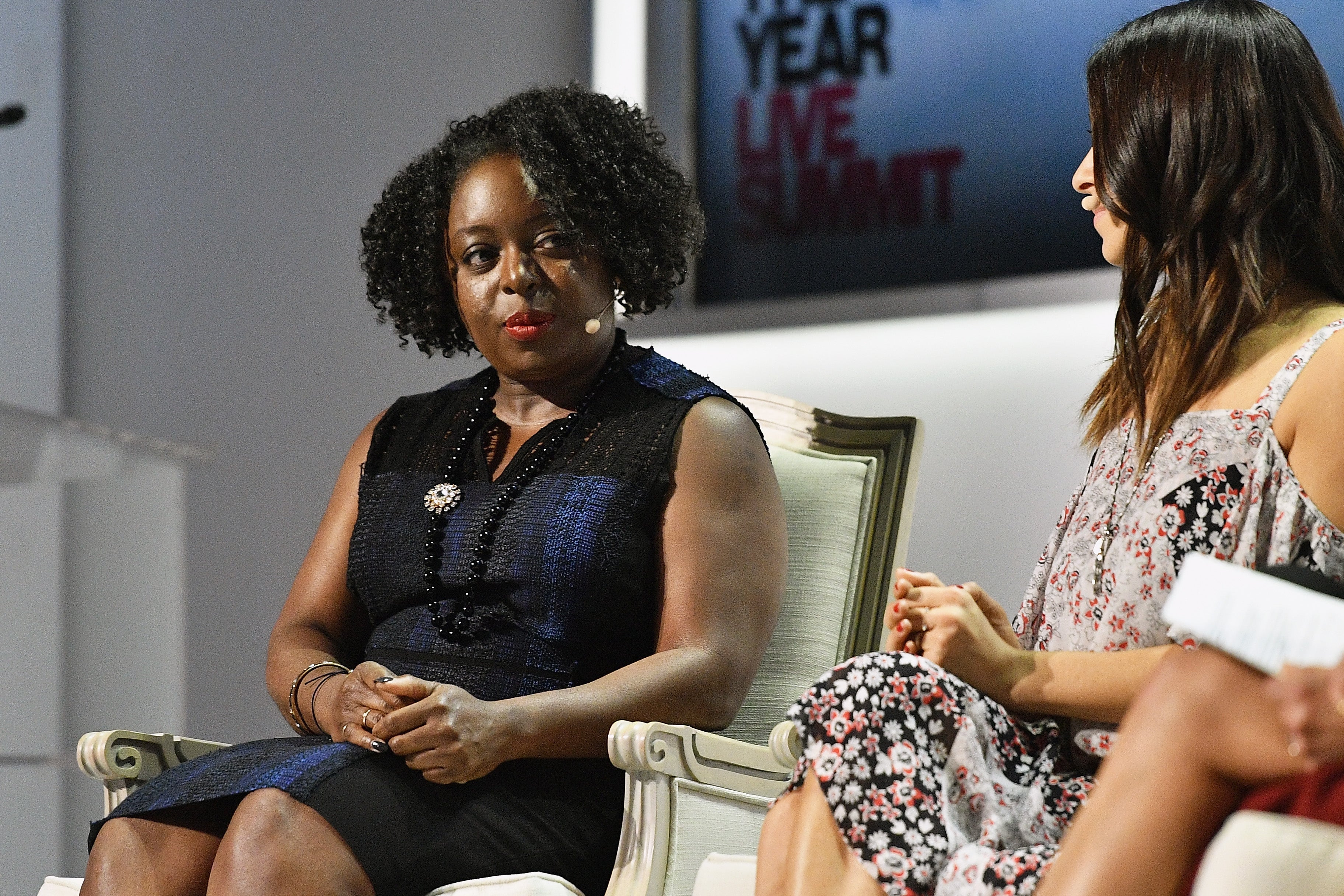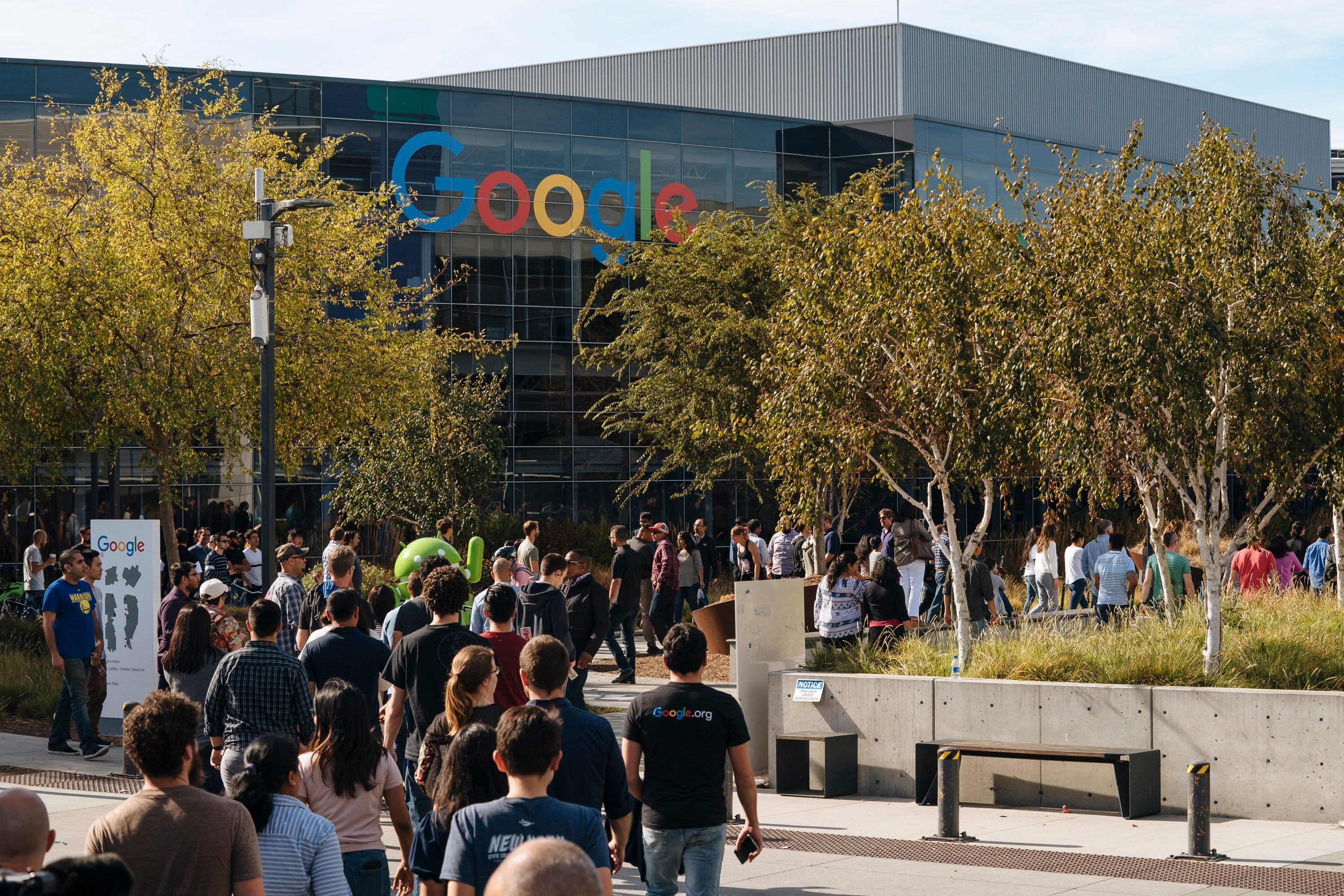Tech is dominated by white males but Kimberly Bryant is changing that
The position of black women in this innovative industry is getting worse, the founder of Black Girls Code tells Andrew Buncombe


When Kimberly Bryant started the organisation Black Girls Code she wanted to address a glaring deficiency within the world of technology: it was too male and it was too white. The corporate executive wanted there to be more women, and particularly more women of colour. So she quit her job and set about trying to “move the needle”.
Ten years later, her group has helped train and mentor more than 80,000 girls and young women in many of the skills that could help them launch a career in various fields of technology. Yet, when she assesses the system she is trying to correct, while the issue of male-female disparity has improved a little, the number of women of colour has decreased.
“There's still a significant amount of work to do in terms of building this pipeline,” she tells The Independent, speaking from San Francisco. “But there’s even more work to do around longevity and sustaining participation in the industry, once women of colour are able to access these worlds.”
The lack of diversity within technology, especially at the most senior levels, is not itself a new problem. Fewer, perhaps, are aware that the situation for women of colour is going backwards.
A 2017 study by the Ascend Foundation found that between 2007 and 2015 there was a 13 per cent drop in the number of black women in the industry. It also found that along with Asian and Latino women, black women were the least likely to be promoted to senior positions.
Meanwhile, the position of white women, while still not at parity with men, had markedly improved. “Minority women continue to bump up against a double-paned glass ceiling,” wrote co-author Denise Peck, a former vice-president at Cisco Systems, the multinational technology conglomerate.
The data show that a general focus on developing women leaders has not addressed the distinct challenges for Asian, black, or hispanic women
“The data show that a general focus on developing women leaders has not addressed the distinct challenges for Asian, black, or hispanic women. This has been an unspoken truth in the minority community, and we hope that our report opens a long overdue dialogue.”
A separate study by the Kantor Kapor Centre for Social Impact found a key reason for the turnover of women of colour in California’s Silicon Valley, in particular, was the ubiquity of racist, sexist and toxic work environments. And all of this has been going on in an industry filled with companies such as Google, Apple, Facebook, Intel and Twitter, which are considered to be leaders in innovation and ingenuity.
Often, the evidence for such disquiet has been on open display. In 2012, Ellen Pao sued her venture capital employer, Kleiner Perkins Caufield and Byers, accusing it of discriminating against her on the basis of her gender. A 2015 court ruling found against her, but her case triggered a major conversation about the treatment of women, particularly of colour, in the industry.

In 2017, Google fired a member of staff who had written an internal memo that suggested the lower number of women in the field might be the result of their lesser biology. The following year, Google employees around the world protested over the treatment of women. In December 2020 Google was at the centre of more controversy after it fired a high-profile black researcher, Timnit Gebru, who spoke out for more women and people of colour.
Bryant says that while numbers are important, it is essential also to pay attention to what major employers are doing to address the barriers that appear to be stopping them filling open positions with people from diverse backgrounds.
“There have been many different discussions around discriminatory practices around hiring, and over pattern matching [a term that refers to an inherent bias among recruiters to try to fill slots with individuals who “match” people already in similar roles],” she says. “And there are issues that we see around unhealthy workplace environments that cause significant attrition rates.”
Bryant, 54, was born in an inner-city neighbourhood of Memphis, Tennessee, and described herself as a “nerdy girl” who excelled at science and was a member of the high school’s mathematics team. Neither of her parents had a background in science, yet she obtained a scholarship to study electrical engineering at the city’s Vanderbilt University. When she graduated, she took corporate roles at DuPont, Genentech and Merck.
Getting through Vanderbilt engineering school was one of the hardest things I ever did in my life at the time – but it was also a great achievement
“The Vanderbilt experience made me more sensitive to the need for creating a more inclusive industry,” Bryant told the university website.
“It was difficult. Getting through Vanderbilt engineering school was one of the hardest things I ever did in my life at the time – but it was also a great achievement. It gave me the grit and the resilience to be able to stick to the path I’m on right now, regardless of what the roadblocks are. I’m sticking with it to make a difference.”
She says she was inspired to start Black Girls Code back in 2010, when attending one of the many conferences that was part of her job, she listened to yet another panelist claim the technology industry was dominated by men because there were not enough women out there to fill positions. Bryant, by then the mother of a daughter, Kai, said that was not acceptable. “Twenty-plus years after I received my engineering degree, we’re still complaining that we can’t find women to fill these roles. It’s ridiculous.”
And does her group literally teach young women to write computer code?
“The primary pillar is a chapter-based programme that holds workshops and enrichment events that happen throughout the year, in which girls can come in and learn coding skills, basic group coding skills,” says Bryant, adding that there are 14 US chapters, and one in Johannesburg, South Africa.
“So they're learning game development, they're learning about robotics, they're learning mobile app development, web app development, artificial intelligence, you name it.”
She says the parents of the young women, who can be as young as seven when they join her workshops – which have been taking place online since the Covid pandemic – are major drivers in encouraging them to take part. “Parents are some of the biggest and strongest advocates for tech education for their young people because they have exposure to these tech fields within their careers and they see that as an opportunity for growth,” she says.
While Bryant is optimistic about the pipeline of talent she is helping to train, within the industry much needs to change. Recently, when Seattle-based Amazon announced that founder Jeff Bezos was standing down as CEO, it replaced him with with another middle-aged, middle-class white man, Andy Jassy. The company’s so-called “S Team“ of two-dozen senior executives contains four women, and two people of colour, both of them men.
What sort of message does such a set-up send to the young women Bryant is trying to inspire and encourage? “Not a good message. One of the things I was speaking to someone about yesterday is how important mentorship and role models are. It’s important for students, but it's also important once you reach the career field as you begin your tech career pathway,” she says.
“It's important not only to have people of colour and women in entry level roles, they need to be represented in middle management, they need to be represented in the C suite, they need to be represented on on corporate boards.”
Bryant says California last autumn passed legislation requiring publicly traded corporations that have their headquarters in the state, to appoint directors from underrepresented communities to their boards – the first law of its kind in the nation.
“When we talk about racial justice, we talk about power and needing to have seats at the table,” Gavin Newsom, the governor, said after signing the bill into law.
Bryant also wants to see a shake up of the “broader ecosystem” to encourage and enable more women of colour to become founders of technology start ups. “When we look at that side of the table, when it comes to venture capital and investment, we find that there are significant disparities there as well,” she says.
“So part of this issue is not only moving women and people of colour into the chairs as engineers, but giving them an opportunity to become founders and creators of these companies… [This] is a significant issue that needs to be addressed and regulated as well.”
When she considers the initiative she embarked upon 10 years ago, the gains made and the work still to be done, what might success look like?
“Equity, in a nutshell,” she says. “We've said this for women, but I also say this in terms of opening that funnel around racial inequities – equitable participation equal to our demographic.”
She says women and people of colour are heavy users and early adopters of technology. They are, therefore, key consumers to whom these products are being marketed to: “I want to see an equitable representation of us in roles across the board, from enrolment engineers, leaders, and so forth,” she says. “Moving the needle so that women are receiving parity in terms of representation in the industry.”



Join our commenting forum
Join thought-provoking conversations, follow other Independent readers and see their replies
Comments